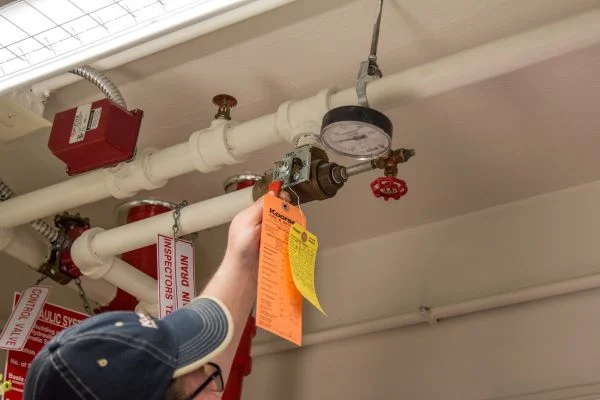Have you ever wondered about the intricate workings of fire protection in buildings? In this detailed exploration, we’ll unravel the mysteries behind “How Do Ceiling Sprinklers Work” to provide you with a comprehensive understanding of their functionality, significance, and the role they play in ensuring the safety of your environment.

Understanding the Basics: How Do Ceiling Sprinklers Work
When it comes to fire safety, ceiling sprinklers are a crucial component of a building’s defense mechanism. Let’s delve into the inner workings of these fire protection systems to comprehend how they operate and contribute to the prevention and suppression of fires.
The Anatomy of Ceiling Sprinklers: How Do They Operate?
- Activation Mechanism: Ceiling sprinklers are designed to activate automatically in the presence of heat. Each sprinkler head contains a heat-sensitive element, typically a glass bulb filled with a heat-sensitive liquid. When the temperature in the vicinity of the sprinkler rises significantly, the bulb bursts, triggering the sprinkler to activate.
- Individual Activation: Contrary to common misconceptions, not all sprinklers activate simultaneously. Each sprinkler head operates independently, responding only to the heat in its immediate vicinity. This individual activation ensures that water is directed precisely where it’s needed, minimizing water damage.
- Water Release: Once activated, the sprinkler releases pressurized water. The force of the water discharge is calculated to control the fire effectively while minimizing water damage to the surroundings. The goal is to provide an immediate and targeted response to the specific area affected by the fire.
How Are They Configured?
- Standard Pendant Sprinklers: These are the most common type of sprinklers and are often seen in commercial and residential buildings. They hang down from the ceiling and release water in a downward spray pattern.
- Upright Sprinklers: Upright sprinklers, installed vertically, are ideal where obstructions could disrupt pendant sprinkler spray patterns.
- Side Wall Sprinklers: Side wall sprinklers are mounted on the walls and are designed for spaces where a pendant or upright sprinkler might not be suitable, such as in narrow corridors or confined spaces.
Read too: Understanding the Labor Cost to Texture Ceiling and Enhance Your Home: Unveiling the Secrets
How Do They Mitigate Damage?
- Immediate Response: The automatic activation of ceiling sprinklers ensures an immediate response to the onset of a fire. This quick reaction time is crucial in preventing the escalation of the fire and containing it to the smallest possible area.
- Controlled Water Discharge: The design of ceiling sprinklers allows for controlled water discharge, ensuring that the fire is suppressed effectively without causing excessive water damage to the surrounding areas. This balance is crucial for minimizing property loss.
- Protection of Occupants: Ceiling sprinklers play a vital role in protecting the occupants of a building by providing a swift response to fire emergencies. Their automatic activation reduces the reliance on human intervention, allowing for a timely and efficient response.
Conclusion
Understanding how ceiling sprinklers work is essential for appreciating their role in fire safety. These systems are not just passive components; they are active defenders, poised to respond swiftly to the threat of fire. By comprehending the mechanics of ceiling sprinklers, we can better appreciate the significance of these systems in safeguarding lives and property.
In conclusion, “How Do Ceiling Sprinklers Work” is not just a question of curiosity; it’s a fundamental aspect of fire safety knowledge that empowers us to create safer environments for ourselves and those around us.